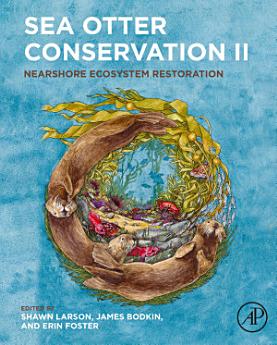Sea Otter Conservation II: Nearshore Ecosystem Restoration, Edition 2
About this ebook
About the author
Dr. Shawn Larson received her Ph.D. from the University of Washington School of Aquatic and Fishery Science. Shawn is the Senior Conservation Research Manager at the Seattle Aquarium. She has been working with sea otters for 28 years focusing on sea otter reproduction, population genetics, diet characteristics, nearshore ecology, and most recently the sea otter’s role in mitigating climate change. Dr. Larson has organized and run the Sea Otter Conservation Workshop in Seattle since 1999, serves as the Sea Otter Species Coordinator for the International Union for the Conservation of Nature’s Species Survival Commission’s Otter Specialist Group and co-edited Volume 1 of Sea Otter Conservation.
James Bodkin is Scientist Emeritus with the US Geological Survey. Jim received a MSc degree from California Polytechnic State University, San Luis Obispo in 1986. He led the sea otter and nearshore ecosystem research program for the USGS, Alaska Science Center until his retirement in 2013 and continues to consult with government, private and academic organizations regarding sea otters and coastal marine ecosystems. Jim has 47 years of experience with sea otters and marine ecosystems and co-edited Volume I of Sea Otter Conservation.
Dr. Erin Foster is a postdoctoral Research Scientist with the Cetacean Research Program at Fisheries and Oceans Canada’s Pacific Biological Station. Erin received a PhD from the University of Victoria, examining the effects of sea otter range expansion, their influence on eelgrass population genetics and community ecology, and the ancient relationships between sea otters, clams, and Indigenous clam gardening. Erin has 17 years of experience with sea otters and nearshore ecology and is interested in restoring the ecological interactions that have been lost or modified where keystone species are reduced.






